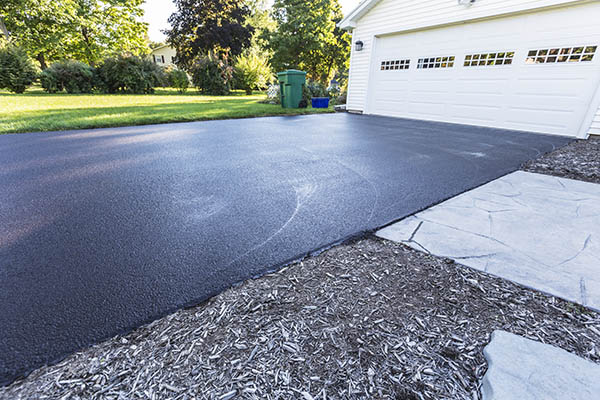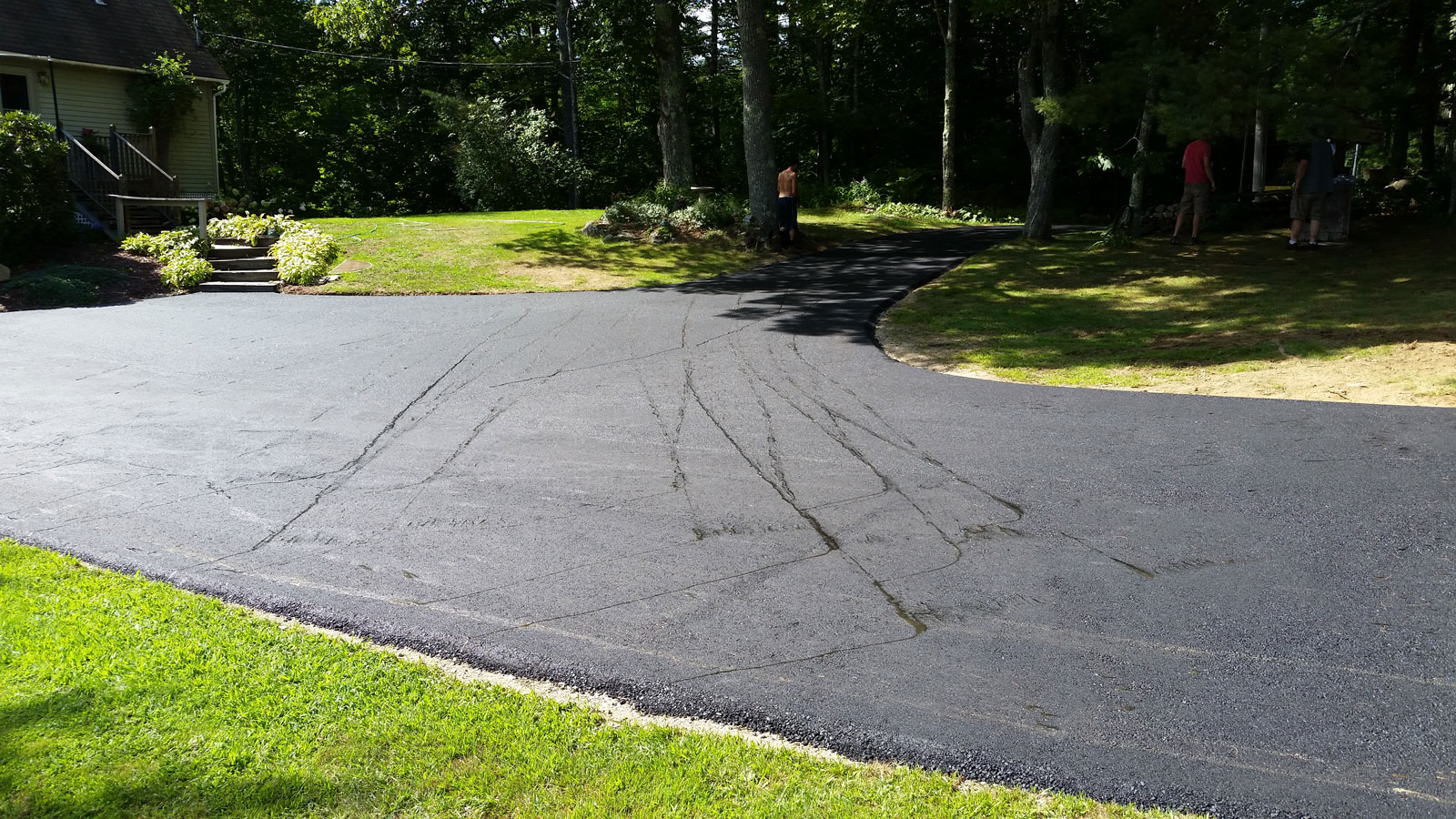Release the Prospective: Regrading and Asphalt Sealing for Commercial Spaces
Release the Prospective: Regrading and Asphalt Sealing for Commercial Spaces
Blog Article
Hot Mix Asphalt: A Sustainable Service for Sidewalk
Warm Mix Asphalt (HMA) has arised as a leading sustainable selection for pavement solutions, using a myriad of environmental advantages and ingenious technologies. As the need for environmentally friendly building and construction methods expands, checking out the subtleties of HMA's sustainability can offer valuable insights right into the future of pavement remedies.
Ecological Advantages of Hot Mix Asphalt

Moreover, Warm Mix Asphalt helps to minimize urban warmth island effects. Its dark shade absorbs sunlight, reducing the amount of warmth reflected back right into the atmosphere compared to lighter-colored sidewalks. This can lower ambient temperatures in city areas, reducing the need for air conditioning and eventually lowering energy usage.
Furthermore, Warm Mix Asphalt adds to improved stormwater management. Its porous nature allows water to infiltrate the pavement and charge groundwater supplies, reducing runoff and the danger of flooding. These environmental benefits make Hot Mix Asphalt a lasting option for leading roadways and highways.
Power Effectiveness in HMA Manufacturing
Is energy efficiency a critical consider the manufacturing of Hot Mix Asphalt (HMA)? Absolutely. Energy plays a considerable function in the production of HMA, affecting both expense and environmental sustainability. One essential aspect of energy efficiency in HMA manufacturing is making use of cozy mix asphalt (WMA) modern technologies (hot mix asphalt). WMA permits the blending and positioning of asphalt at lower temperatures compared to conventional warm mix asphalt, resulting in minimized power usage during production. This procedure not just reduces fuel use however likewise lowers greenhouse gas exhausts, making it a more eco-friendly option.
Furthermore, developments in plant modern technologies have led to even more energy-efficient HMA manufacturing processes. By enhancing power usage in HMA production, the market can lower its carbon footprint while preserving high-grade pavement materials.
Recyclability of Warm Mix Asphalt
The recyclability of Warm Mix Asphalt (HMA) is a pivotal element of its sustainability and lasting environmental impact. HMA is among one of the most recycled materials in the United States, with over 100 million heaps of redeemed asphalt pavement (RAP) being reused yearly in brand-new sidewalk building and construction. Recycling HMA provides a number of environmental advantages, such as lowering the demand for virgin materials, lowering energy consumption during production, and reducing the amount of waste sent to garbage dumps.
The process of recycling HMA entails grating the existing pavement, crushing it into smaller sized pieces, and mixing it with brand-new accumulation and asphalt binder to produce a recycled mix. In general, the recyclability of HMA plays a significant duty in advertising sustainable practices within the sidewalk market.

Long-Term Efficiency of HMA
Asphalt pavements demonstrate toughness and strength over an extensive duration, reflecting the long-term performance of Warm Mix Asphalt (HMA) my company The longevity of HMA can be associated to its capacity to endure rush hour loads, extreme climate condition, and the results of aging. Studies have revealed that well-designed and effectively built HMA pavements can last for twenty years or even more with regular maintenance. The secret to making best use of the lasting efficiency of HMA depends on utilizing premium materials, following ideal techniques in building, and carrying out efficient maintenance strategies. view website Correct water drainage, regular evaluations, and timely repair work are crucial for maintaining the structural honesty of HMA pavements gradually. In addition, advancements in HMA technology, such as using polymer-modified binders and cozy mix asphalt, have further boosted the toughness and durability of HMA sidewalks. By prioritizing quality building and construction and maintenance techniques, HMA continues to prove itself as a cost-efficient and sustainable remedy for resilient sidewalk facilities.

HMA: Resilience and Sustainability
Demonstrating both toughness and sustainability, Hot Mix Asphalt (HMA) has actually ended up being a cornerstone in the building and construction of resilient pavement frameworks - angled parking. HMA's durability comes from its ability to stand up to heavy tons, harsh weather, and high traffic volumes, making it a trustworthy choice for roads, freeways, and flight terminal paths. The composition of HMA, which normally includes aggregates, binder, and filler, plays a crucial function in boosting its longevity and resistance to tear and put on
Moreover, HMA's sustainability important source hinges on its recyclability and energy-efficient manufacturing procedure. The ability to reuse reclaimed asphalt sidewalk (RAP) in new HMA blends decreases the need for virgin materials and minimizes the environmental effect of sidewalk construction and maintenance. In addition, the power efficiency of producing HMA depends on its reduced blending temperature levels contrasted to other pavement materials, causing minimized power intake and greenhouse gas emissions.
Conclusion
In conclusion, warm mix asphalt (HMA) supplies a sustainable service for sidewalk with its eco friendly characteristics. HMA's recyclability, power effectiveness in production, and lasting longevity make it an environment-friendly option for roadway building.
HMA is one of the most recycled materials in the United States, with over 100 million tons of redeemed asphalt pavement (RAP) being reused each year in new sidewalk building.The process of reusing HMA involves crushing the existing pavement, squashing it into smaller sized pieces, and blending it with new accumulation and asphalt binder to create a recycled mix.Asphalt sidewalks show longevity and durability over an extensive period, mirroring the long-term efficiency of Warm Mix Asphalt (HMA) Additionally, innovations in HMA technology, such as the use of polymer-modified binders and warm mix asphalt, have actually additionally enhanced the toughness and longevity of HMA sidewalks. The ability to reuse redeemed asphalt pavement (RAP) in new HMA combinations reduces the need for virgin products and minimizes the ecological influence of pavement building and upkeep.
Report this page